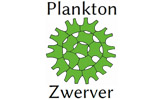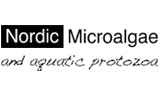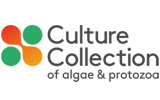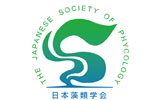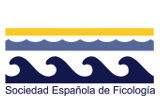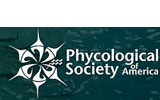Phymatolithon Foslie, 1898, nom. cons.
Holotype species: Phymatolithon polymorphum Foslie
Publication details: Foslie, 1898: 4
Currently accepted name for the type species: Phymatolithon calcareum (Pallas) W.H.Adey & D.L.McKibbin ex Woelkering & L.M.Irvine
Original publication and holotype designation: Foslie, M. (1898). Systematical survey of the Lithothamnia. Det Kongelige Norske Videnskabers Selskabs Skrifter 1898(2): 1-7.
Precise date of publication: 14 October 1898 (see Woelkerling 1993: 278 for details).
Description: Plants calcified, lacking genicula, entirely pseudoparenchymatous; encrusting to warty, lumpy, fruticose, discoid, layered or foliose; epigenous and growing partially to completely attached to the surface of various substrates (e.g. molluscs, rock), or growing unattached and free-living as rhodoliths; haustoria unknown.
Thallus organization generally dorsiventral in crustose portions but more or less radial in branches; thallus construction monomerous throughout, consisting of a single system of branched laterally coherent filaments that contribute to a ventral or central core and a peripheral region where portions of core filaments or their derivatives curve outwards towards the thallus surface; coaxial growth (in which cells of adjacent filaments in core region are aligned in arching tiers) apparently not. Most filaments usually terminating at the thallus surface in epithallial cells (generally one per filament); outermost walls of epithallial cells rounded or flattened but not flared at the corners; cell elongation occurring mainly behind actively dividing subepithallial initials that are usually as short as or shorter than their immediate inward derivatives. Cells of adjacent filaments linked by fusions; secondary pit-connections unknown.
Gametangia (where known) and carposporangia (where known) developing in uniporate conceptacles. Spermatangia (male gametangia) and carpogonia (female gametangia) produced in separate conceptacles; male and female conceptacles occasionally formed on the same plant but much more commonly formed on different plants. Spermatangia (where known) formed on branched and unbranched filaments that arise from the conceptacle chamber floor and roof; spermatangial initials (where known) apparently not overlain with protective cells during early stages of development; spermatangial conceptacle roof formation (where known) occurring centripetally from groups of vegetative filaments peripheral to developing spermatangial filaments on the conceptacle chamber floor. Carpogoina (where known) terminating 2-3 celled unbranched filaments that arise from the conceptacle chamber floor. Carposporophytes (where known) developing in carpogonial conceptacles after presumed fertilization; mature carposporophytes apparently lacking a conspicuous central fusion cell but possessing several-celled filaments bearing terminal carposporangia.
Tetrasporangia/bisporangia formed in conceptacles on separate plants from gametangia and carposporangia. Roofs of tetrasporangial/bisporangial conceptacles multiporate and composed of cells. Tetrasporangia each containing four zonately arranged spores and producing an apical plug that blocks a roof pore before spore release. Bisporangia each containing two spores but otherwise similar to tetrasporangia.
Information contributed by: Wm. J. Woelkerling. The most recent alteration to this page was made on 2021-08-10 by E.A. Molinari Novoa.
Taxonomic status: This name is of an entity that is currently accepted taxonomically.
Gender: This genus name is currently treated as neuter.
Most recent taxonomic treatment adopted: Irvine, L.M. & Woelkerling, W.J. (1986). Proposal to conserve Phymatolithon against Apora (Rhodophyta: Corallinaceae). Taxon 35: 731-733.
Comments: Comments: Information on the taxonomic history, nomenclature, and other matters associated with the name Phymatolithon is contained in Woelkerling (1988: 197-203). Growth form terminology (encrusting, lumpy, fruticose, etc.) follows Woelkerling et al. (1993).
An account of the epitype specimen of Phymatolithon calcareum, the type species of Phymatolithon, is presented in Woelkerling & Irvine (1986). Cabioch (1970) provides information on gametangial plants, and additional data on the species, including references is summarized in Chamberlain & Irvine (1994: 212-215).
The types and other specimens of a number of species and infraspecific taxa currently referred to Phymatolithon need to be re-examined in detail to verify whether generic placement is correct, to re-assess whether recognition as a distinct species or infraspecific taxon is justified, to understand more fully the extent of infraspecific morphological and anatomical variation, and to determine the diagnostic characters that separate each species from others within the genus and each infraspecific taxon from others assigned to the same species. At present, a number species and infraspecific taxa assigned to Phymatolithon are poorly or incompletely known.
Biogeographically, Phymatolithon is recorded fromtemperate and colder water environments in both the northern and southern hemispheres, but a number of published records require confirmation.
The lists below of diagnostic characters of Phymatolithon, and of the higher taxa to which it belongs, are derived from data in Harvey, Broadwater, Woelkerling & Mitrovski (2003), Harvey, Woelkerling & Millar (2003), Le Gall & Saunders (2007), Woelkerling et al. (2008: 282) and/or Lre Gall et al. (2009) Diagnostic characters are those that taken together distinguish a taxon from others of the same taxonomic rank (e.g. characters distinguishing Phymatolithon from other genera of the Hapalidiaceae, subfamily Melobesioideae). Harvey, Woelkerling & Millar (2003: 653) also provide a diagnostic comparison of Mesophyllum with other currently recognized non-fossil genera of Melobesioideae.
Nomenclatural note
The ICBN rules cited below are those adopted by the Seventeenth International Botanical Congress, Vienna, Austria, July 2005 (McNeill et al. 2006).
In accordance with ICBN Art 13.3, the name Phymatolithon Foslieis treated as pertaining to a non-fossil taxon because its type is based on a non-fossil specimen. Both non-fossil and fossil taxa have been assigned to the genus.
The generic name Phymatolithon is typified (ICBN Art. 10.1) by the type of P. polymorphum Foslie, nom. illeg. the only species originally included in the genus. Although Foslie based his species name on Millepora polymorpha Linnaeus (1767: 1285), Foslie's binomial is correctly cited as Phymatolithon polymorphum Fosile and not P. polymorphum (Linnaeus) Foslie because Millepora polymorpha Linnaeusis illegitimate (see below) and thus cannot serve as a basionym (ICBN Art. 45.3). Phymatolithon polymorphum Foslie is considered to be a new name (ICBN Art. 58) but is also illegitimate because Foslie did not explicitly exclude the type of Millepora calcarea Pallas (see ICBN Art. 58, Note 1) from his species.
Millepora polymorpha Linnaeus and Phymatolithon polymorphum Foslie are illegitimate (ICBN Art. 52) because they are superfluous substitute names for Millepora calcarea Pallas (1766: 265). In accordance with ICBN Art. 7.5, Millepora polymorpha and Phymatolithon polymorphum are automatically typified by the type of M. calcarea, the name that ought to have been adopted under the rules. Because the type of Millepora calcarea Pallas typifies the name Phymatolithon polymorphum Foslie, it also typifies the generic name Phymatolithon (ICBN Art. 10.1).
The current correct name for M. calcarea is Phymatolithon calcareum (Pallas) Adey & McKibbin (1970: 100). Details are provided in Woelkerling & Irvine 1986.
Phymatolithon Foslie (1898) is formally conserved against Apora Gunnerus (1768) under ICBN Art 14 and is listed in the Nomina Generica Conservanda (ICBN, Appendix III, A9). In accordance with ICBN Art. 14.4, Phymatolithon is also automatically conserved against all other homotypic synonyms (generic names based on the same type); these are listed under Synonyms below.
Further data relating to the conservation of Phymatolithon Foslie are provided in Woelkerling & Irvine (1986), Irvine & Woelkerling (1986) Woelkerling (1988: 199). Apora Gunnerus (1768) is listed opposite Phymatolithon Foslie in Appendix III, A9 as the earliest homotypic (nomenclatural) synonym.
Woelkerling & Irvine (1986: 58) designated a specimen in the Natural History Museum, London (BM, Algal Box Collection 1626) as neotype of Millepora calcarea Pallas. Spencer et al. (2009: 253) noted, however, that subsequent changes in the International Code of Botanical Nomenclature meant that this neotypification had to be superseded. Consequently L.M. Irvine (in Spencer et al. 2009: 253) lectotypified the species with one of the illustrations cited in the protologue by Pallas (1766), namely Tab. 27, fig. C in Ellis (1755), and Woelkerling & Irvine (in Spencer et al. 2009: 253) then designated the specimen in BM Algal Box Collection 1626 (BM 000562555, depicted in Woelkerling & Irvine 1986: figs 1A, 2-15) as epitype.
The application of ICBN Art 45.3 & Art. 58 in determining authorship and illegitimacy was ascertained in email correspondence in May 2009 with Paul Silva (Chairman, Permanent Nomenclature Committee for Algae) and John McNeill (Chairman, Editorial Committee for the International Code of Botanical Nomenclature adopted by the Seventeenth International Botanical Congress, Vienna, Austria, July 2005) - (20 July 2009) - M.D. Guiry
Verification of Data
Users are responsible for verifying the accuracy of information before use, as noted on the website Content page.
Contributors
Some of the descriptions included in AlgaeBase were originally from the unpublished Encyclopedia of Algal Genera,
organised in the 1990s by Dr Bruce Parker on behalf of the Phycological Society of America (PSA)
and intended to be published in CD format.
These AlgaeBase descriptions are now being continually updated, and each current contributor is identified above.
The PSA and AlgaeBase warmly acknowledge the generosity of all past and present contributors and particularly the work of Dr Parker.
Descriptions of chrysophyte genera were subsequently published in J. Kristiansen & H.R. Preisig (eds.). 2001. Encyclopedia of Chrysophyte Genera. Bibliotheca Phycologica 110: 1-260.
Linking to this page: https://www.algaebase.org/search/genus/detail/?genus_id=4
Citing AlgaeBase
Cite this record as:
E.A. Molinari Novoa in Guiry, M.D. & Guiry, G.M. 10 August 2021. AlgaeBase. World-wide electronic publication, National University of Ireland, Galway. https://www.algaebase.org; searched on 24 May 2025
 Request PDF
Request PDF



